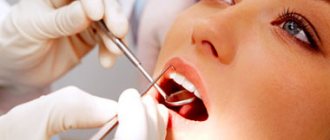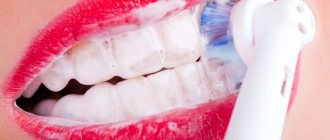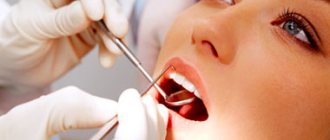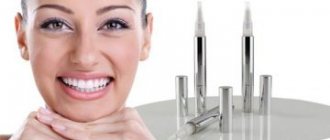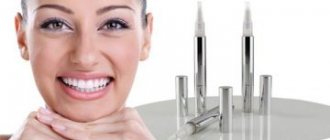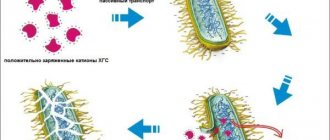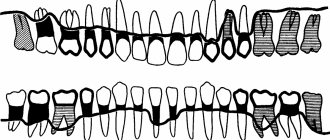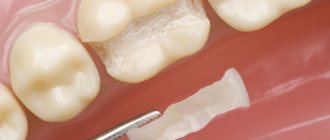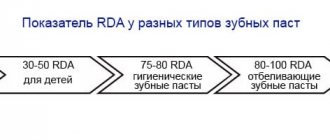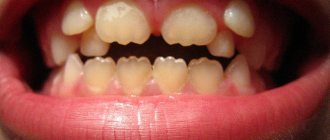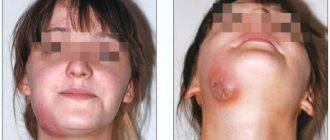Oral hygiene is one of the most accessible and at the same time one of the leading methods of preventing oral diseases. Regular and competent oral care is an integral part of all preventive measures. Mass population surveys conducted in all countries of the world have convincingly shown that systematic oral care has an undoubted preventive value. It is possible to objectively assess the level of oral hygiene only using hygiene indices.
To identify dental plaque in assessing oral hygiene in modern dentistry, objective indicators (indices) are used that characterize the quality and quantity of dental plaque. However, the number of assessment methods, which are based on different numbers of teeth from different functional groups, up to staining all teeth on both sides or collecting and weighing plaque around individual teeth, indicates the relevance of the problem under consideration and the imperfection of existing methods.
The formula will help determine the condition of the mouth
To determine the condition of the oral cavity in medicine, there are about 80 different hygiene indices, based on the principle of staining the enamel with a special solution and identifying dental plaque.
According to the parameters they define, indices can be classified into 4 groups, assessing:
- area affected by plaque;
- thickness of plaque on teeth;
- mass of plaque;
- other parameters of dental plaque (chemical, physical and microbiological).
KPI
CPI is a comprehensive periodontal index. You can start research from adolescence, analyzing the condition of teeth 17/16, 11, 26/27, 31, 36/37, 46/47.
KPI Index
For a full analysis, you need to provide high-quality lighting with lamps. Use the same equipment as usual.
Important! Some pathologies suggest serious injuries.
If the doctor is in doubt, it is necessary to conduct electroodontodiagnosis.
Electroodontodiagnosis
CPU in dentistry
Dentists should use these calculations during the initial examination of the patient. So, for example, the average values of the indices KPU, kp. KPU+KP of teeth and cavities in dentistry allows you to determine the intensity of carious lesions. These abbreviations contain the following meanings:
- K – carious permanent teeth;
- P – permanent teeth in which a filling is installed;
- U – extracted molars;
- j – temporary teeth affected by caries;
- p – filled temporary teeth.
- According to the World Health Organization, the average CP index for children 12 years old should be from 2.7 to 4.4, and for citizens aged 35-44 years 6.3-12.7.
conclusions
Periodontal indices provide information about the hygienic state of the periodontal tissue, the intensity and prevalence of inflammation and destruction in periodontal tissues.
Examinations allow a preliminary assessment of the general condition of the periodontium and make a conclusion about the effectiveness of therapeutic and hygiene products.
If you find an error, please select a piece of text and press Ctrl+Enter.
Tags gums treatment periodontal indices periodontal disease
Did you like the article? stay tuned
Previous article
The subtleties of returning the original shade to a tooth using intracanal whitening
Next article
Features of teeth whitening with Double White products
Simplified index (IGR-U)
The Green Vermillion Hygiene Index measures plaque and tartar on the surfaces of the 2 upper first molars, 2 lower first molars and 2 upper incisors.
Ratings are given as follows:
- 0 – no plaque;
- 1 – no more than 1/3 of the tooth surface is covered with plaque;
- 2 – plaque affects from 1/3 to 2/3 of the tooth;
- 3 – dental plaque covers more than 2/3 of the surface.
The simplified hygienic index is calculated by adding the plaque index and tartar index on 6 teeth.
Silness-Lohe method
In periodontics, preference is often given to the Silness-Lohe technique, which is based on determining the amount of soft plaque in the gingival zone. The essence of the method is simple: the dentist runs the end of the probe along the neck of the tooth, capturing the gingival groove. If the instrument does not capture plaque at all, a score of 0 is given. If the amount of plaque is small - 1. If a thin layer of plaque is noticeable near the neck of the tooth, and a significant amount is retained on the probe - 2. If a large amount of plaque and food is visually determined in the area where the gum adjoins the tooth. residues - Z. The indicators of all teeth are added up, the result is divided by the number of teeth.
Up to contents
The information in this article is for reference only and does not replace professional advice from a doctor. To make a diagnosis and prescribe treatment, consult a qualified specialist.
PMA – papillary-alveolar-marginal index
When calculating the PMA index, a solution of iodine or Lugol is used, which is applied to the gums and the degree of tissue inflammation is determined by the reaction to the irritant.
The evaluation criteria are:
- 1 – if the papilla (P) is inflamed;
- 2 – in case of inflammation of the marginal edge (M);
- 3 – inflammation of the alveolar part of the gum (A).
Formula RMA = Sum of points/n*3 (in percentage), where n is the number of teeth (up to 6 years – 20 teeth; 6–12 years – 24 teeth; 12-14 years – 28 teeth; over 15 years – 30 teeth) .
If the value is less than 30%, then the degree of damage is mild, 31-60% is moderate, 61% or more is severe.
WHO Epidemiological Survey
Epidemiology is a branch of medicine that studies the nature and form of the spread of pathologies.
Epidemiological screening includes 3 stages:
- Preparatory. Planning is carried out for the upcoming survey, indicating its methods, deadlines and tasks.
A working group is created from nurses and trained doctors. For the survey, the population composition differs in terms of living conditions and populations. The number of people depends on the tasks and the required level of viewing accuracy. - Examination. To record the data received, a registration card is used (it has a simplified form for children).
It is prohibited to make additions or corrections to it. All records are coded (each code indicates a specific feature or its absence). - Evaluation of results . The information is calculated according to the required indicators. The result is displayed as a percentage or digital notation.
Such screening helps to assess the dental situation in a certain area, determine the relationship between oral health and social and environmental living conditions, and monitor age-related changes in teeth and gum tissue.
It is essential to determine the most common diseases and the intensity of their manifestation in different areas and age categories.
After analyzing the materials obtained during the study, preventive measures are developed to treat dangerous conditions and teach hygiene rules.
Php Index
Scientists Podszadlej and Haley developed an oral hygiene performance index. First, a dye solution is applied to the teeth, then the patient rinses his mouth with water, and 6 teeth are examined. In this case, their surface is divided into 5 sections: medial, distal, mid-occlusal, central, mid-cervical. The absence of staining is determined by zero, and the presence - by one.
When calculating, use the formula: IG = ZN/n, where ZN is the sum of codes for all teeth; n – number of teeth examined. With a value of 0, the condition of the oral cavity is considered excellent, and with a value of 1.7 or more, it is considered unsatisfactory.
Serious shortcomings
Significant flaws in the indicators of KPUz and KPUpov include their uncertainty with increasing decay due to the formation of new depressions in healed teeth, loss of fillings, the occurrence of secondary caries and similar factors.
The multiplicity of caries is shown as a percentage. To do this, the composition of people in whom this disease was found (except for focal demineralization) is divided by the number of those studied in this team and multiplied by one hundred.
In order to assess the prevalence of tooth decay in a particular region, the following estimated conditions for the level of prevalence among twelve-year-old children are used:
- low intensity level – 0-30%;
- relative – 31-80%
- large – 81-100%.
CPITN (periodontal disease treatment need index)
This method covers 10 teeth, allowing the dentist to see the condition of the gums of the upper and lower jaws. Grades are given as follows:
- 0 – no disease symptoms;
- 1 – gums are bleeding;
- 2 – tartar was found above and below the gum;
- 3 – gum pocket 4-5 mm deep;
- 4 – gum pocket more than 6 mm.
It may come as a surprise to many that the condition of teeth can be determined using a formula, but this is the truth. Therefore, do not neglect maintaining oral hygiene, so as not to be a poor student in this calculation.
The iOrtho clinic network provides high-quality services for correcting malocclusion with Invisalign aligners, sign up for a consultation now!
General overview
In dentistry, indices are a quantitative reflection of the progress of the pathological process that has developed in the periodontium.
When compared with clinical diagnostic methods, index assessment is considered relative, since it does not reflect the absolute accuracy of the ongoing process.
But periodontal indexing has some advantages that distinguish it from clinical diagnosis. With its help you can:
- measure the dynamics of tissue infection;
- monitor the spread and development of periodontal diseases;
- monitor the progress of treatment;
- evaluate its success and the results of preventive measures;
- perform epidemiological screening of the population;
- make comparisons of the results of different studies.
There are several dozen assessment indices for studying the condition of periodontium. All of them are divided into 3 groups:
- Reversible . With their help, the dynamics of diseases and the effectiveness of treatment are assessed. Reflect the severity of the inflammatory process, bleeding gums, loose teeth, the size of periodontal and gum pockets.
- Irreversible. They convey the manifestation of such signs as resorption (absorption) of bone tissue in the alveolar process, amyotrophy of the gums.
- Complex. They help to give a comprehensive description of the condition of periodontal tissues, taking into account the existing symptoms and the degree of development of pathological processes.
During one appointment, the dentist may perform several screenings to provide an accurate assessment of tissue health. But all of them, according to doctors, do not provide an individual approach to the patient and cannot completely replace a clinical examination.
What is the Dental Oral Health Index?
The hygiene index is indicators reflecting oral hygiene, the degree of contamination, determining the presence of signs of bacterial infection, indicating the number of teeth that are affected by caries.
The hygiene index allows a specialist to determine the reasons why tooth decay occurs, gum disease occurs, and also prescribe effective preventive measures.
With their help they determine:
- The level of dental health of the patient;
- The severity and stage of caries;
- Number of teeth pulled out;
- Quality of hygiene procedures;
- Presence of malocclusion;
- The degree of effectiveness of therapy.
Important to remember! Each diagnostic criterion for different types of lesions is reflected in an individual index.
Why are hygiene indices needed in dentistry?
The simplest and at the same time effective method of preventing dental diseases is careful adherence to hygiene standards. It is with its help that it is possible to prevent inflammatory and destructive processes in periodontal structures.
During an examination of the patient’s oral cavity, the dentist assigns a hygiene index, which depends on the following criteria:
- quality of teeth cleaning
- oral health
- number of missing teeth, as well as crowns that cannot be restored
- stage of bone tissue destruction
- inflammatory processes and the degree of their neglect
- presence of changes in bite
Hygiene indices in dentistry are used to monitor the effectiveness of treatment. After therapeutic procedures, the indicator should change for the better, which is necessarily recorded in the medical history.
There are different types of hygiene indices, which depend on the parameters being analyzed. In this way, it is possible to note important criteria characteristic of a particular dental disease.
Periodontal index system in general
The following types of periodontal indices in dentistry are distinguished:
- IGs are hygiene indices; they assess enamel contamination and the presence of tartar.
- II - inflammation indices - evaluates inflammatory pathology of the gums, periodontitis and periodontal disease.
- BDI – bone destruction index; combined indices.
All indices are not complicated and do not require special equipment; they are easy to identify. There are a lot of them, the main ones will be discussed below.
What are the subdivisions of indexes?
Periodontal indices are distinguished by reversibility, i.e. subject to regression and not subject to, as well as complex.
Reversible – monitor the dynamics of the pathological process and the effectiveness of treatment. These indices are aimed at the current symptoms of pathologies in their acute period:
- bleeding and inflammation of the gums;
- loose teeth;
- pockets of inflammation – gingival and periodontal.
The most frequently used of these periodontal indices are papillary-alveolar, PI, IG - hygiene indices, of which there are generally more than 15 (Schiller-Pisarev, Pakhomov, Ramfjord, etc.). The data of these indices may change, but the problems respond well to treatment and have a good prognosis, i.e. reversible.
Irreversible indices: gingival recession, X-ray, etc. Irreversible processes are already recorded here when it comes to the consequences and complications of pathologies, such as resorption (resorption) of the bone component of the alveolar processes, recession or amyotrophy of the gums. Treatment is ineffective.
Complex periodontal indices provide a comprehensive assessment of periodontal health. For example, the Komrke index includes a large number of studies: PM index, depth of gum pockets, degree of tissue atrophy, bleeding gums, degree of loose teeth (indicates the degree of inflammation).
Papillary bleeding (PBI) according to Saxer and Miihiemann
The periodontal bpe index (PBI) is needed to determine the degree of gum inflammation. A probe is used to make a groove along the interdental papillae and observe for 30 seconds.
The severity of gingivitis is 4 points:
- 0 – no blood;
- 1 – appearance of only blood spots;
- 2 – pinpoint blood appearances along the line of the furrow;
- 3 – blood fills the triangle between the teeth.
- 4 – intense bleeding.
The study of the papillae - PapillaBleeding - is carried out in the following quadrants: the gums of the 1st and 3rd quadrants from the lingual surface and the 2nd and 4th quadrants - from the vestibular side (the vestibular side is the vertical wall of the tooth from the lips and cheeks). First, each quadrant is counted, then the arithmetic mean is derived.
Prevention of caries
Determining the Green-Vermilion index plays a vital role in the prevention of dental diseases in expectant mothers, which is designed to solve two problems: preventing the development of intrauterine caries in babies and improving the dental status of women.
It is known that the health of the mother affects the process of developing the child’s teeth, which begins at 6-7 weeks of pregnancy. Doctors have determined that with various pathologies in the fetus, the mineralization of tooth enamel slows down, and sometimes stops at the stage of primary calcification. In the postpartum period, it may resume, but will not reach the standard level.
In a woman, already in the early stages of pregnancy, the condition of hard dental tissues and periodontal tissues worsens due to the unsatisfactory hygienic condition of the oral cavity. That is why she must carry out preventive measures until the baby is born. Doctors advise women to adhere to the correct work and rest regime, take vitamin therapy and eat well.
Examination of pregnant women
In order to achieve maximum effect in the prevention of dental diseases, it is necessary to coordinate the work of the dentist and gynecologist, as well as medical examination of women throughout pregnancy. In the dental office, doctors carry out:
- sanitation of the oral cavity;
- assistance in the selection of basic and additional hygiene products, training in rational oral care;
- professional hygiene;
- remineralizing therapy, which increases the resistance of tooth enamel.
Observation of children
By calculating the Green-Vermilion index, doctors can create dispensary groups for monitoring children:
- Group 1 – children who have no pathologies;
- Group 2 – actually healthy babies with a history of any chronic or acute disease that does not affect the function of the most important organs;
- Group 3 – children with chronic illnesses with a balanced, sub- and decompensated course.
There are three phases in the dental examination of children:
- In the first phase of the examination, each child is individually recorded, an additional examination is carried out in the hospital, then an outpatient observation group is determined, the endurance of each child is assessed and the order of examinations is determined.
- In the second, a contingent is formed according to supervision groups, uniform conditions for phasing and continuity of study are assigned, dispensary patients are proportionally divided between doctors, and the needs of the examined contingents in inpatient and outpatient treatment are met.
- In the third, doctors determine the frequency and nature of active supervision of each child, adjust diagnostic and treatment measures in accordance with changes in health status, and evaluate the effectiveness of supervision.
Of great importance is the organization of educational work to prevent dental diseases in children and create motivation to care for newly emerging teeth.
Tartar
The tooth surface is sensitive to various influences. Stones form on it due to the following reasons:
- violation of the chewing process;
- habit of snacking and consumption of an impressive amount of carbonated drinks and carbohydrates;
- eating mostly soft foods;
- diseases of internal organs;
- smoking and alcohol abuse.
The composition of supra- and subgingival stones is somewhat different from each other. The first is dominated by calcium carbonate, magnesium and calcium phosphate. In addition, it is very hard. The second is formed from dental plaque, which contains a large amount of food debris, epithelial cells, mucus, bacteria, bound by viscous saliva.
Why do you need to clean your mouth? It helps prevent the formation of stones. Doctors recommend visiting the dentist regularly and using dental floss, flawless toothpastes and high-quality brushes. You can also use toothpicks and mouth rinses.
Language
Now let’s figure out how to clean your tongue. If there is no plaque on this organ, your digestive system is healthy. Since the time of Hippocrates, doctors have asked the patient to stick out his tongue. It is known that an impressive amount of toxins is expelled from the body through its surface. If bacteria accumulate on the tongue, they become toxic.
This organ contains numerous papillae, bumps and pits, among which tiny particles of food are stuck. This is why the tongue is a breeding ground for bacteria. They are transferred with saliva to the teeth, and then a disgusting smell from the mouth appears - halitosis.
If a person regularly cleans his tongue, the access of infection to his body becomes more difficult, the sensitivity of taste buds increases, and gingivitis, digestive tract disorders, periodontal disease, and caries are prevented.
Everyone needs to scrape this organ, especially smokers and those who have a “geographical” tongue, on the surface of which there are deep folds and grooves.
Tongue care is carried out after the teeth are cleaned and the mouth is rinsed. Bacteria are first removed in sweeping steps (from base to tip) on one half of the organ and then on the other. Then we brush across the tongue 3-4 times, apply the paste to it and carefully scrape the organ from root to edge. Next, you need to rinse your mouth, apply the gel again and leave it on for 2 minutes. After these manipulations, you can wash everything off with water.
Cleaning your tongue is a necessary part of hygiene. It is better to eliminate plaque, mucus, food debris that negatively affects the surface of the tooth with a special scraper or brush (can be soft). A disinfecting gel applied to the scraper fills the gaps between the filamentous papillae. During liquefaction, it actively releases oxygen, which has a powerful antibacterial effect on the anaerobic microflora of the oral cavity. If you periodically perform this procedure, the formation of dental plaque will decrease by 33%.
Inspection
What are the indicators for assessing the results of medical examination by a dentist? It is known that a comprehensive examination of residents involves a method of protecting their health, consisting of providing conditions for their impeccable physical development, preventing illnesses through the implementation of proper sanitary, hygienic, preventive, therapeutic and social measures.
The purpose of medical examination is to strengthen and preserve people's health and increase their life length.
A medical examination is designed to solve the following problems:
- annual analysis of a person’s well-being;
- comprehensive monitoring of patients;
- combating bad habits, identifying and eliminating the causes of tooth decay;
- active and timely implementation of health-improving and therapeutic measures;
- increasing the efficiency and quality of medical care to the population through the successive and interconnected work of all types of institutions, large-scale participation of doctors of various professions, the introduction of technical support, new unifying forms, the creation of mechanical systems for examinations of the electorate with the development of special programs.
